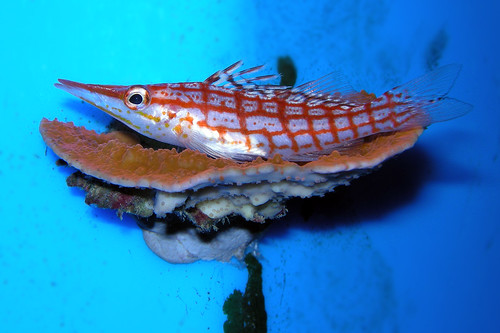Monday, marvelous Monday is here one more time right on schedule. Science talk returns to brighten your day with selections from science sites across the globe. New discoveries, new takes on old knowledge, and other bits of news are all available for the perusing in today's information world. Today's tidbits include warming causes more extreme shifts in Southern Hemisphere's largest rain band, climate and drought lessons from ancient Egypt, a new form of carbon in observed, research reveals bats evolved more than one way to drink nectar, two new owl species discovered in the Philippines, and Greenland's melting breaks record 4 weeks before season's end.
Pull up that comfy chair and grab a spot on the porch. There is always plenty of room for everyone. Another session of Dr. Possum's science education, entertainment, and potluck discussion is set to begin.
Featured Stories
Reports of the effects of climate change continue to arrive as news of the effects on the Southern Hemisphere's largest rain band is reported.
During moderate El Niño events with warming in the equatorial eastern Pacific, the rain band moves north-eastward by 300 kilometres. Countries located within the bands' normal position such as Vanuatu, Samoa, and the southern Cook Islands experience forest fires and droughts as well as increased frequency of tropical cyclones, whereas countries to which the rain band moves experience extreme floods.
"During extreme El Niño events, such as 1982/83 and 1997/98, the band moved northward by up to 1000 kilometres. The shift brings more severe extremes, including cyclones to regions such as French Polynesia that are not accustomed to such events," said Dr Cai, a scientist at the Wealth from Oceans Flagship.
Study of
past climate events in Egypt may offer lessons for the present and for our future.
Large decreases in the proportion of wetland pollen and increases in microscopic charcoal occurred in the core during four different times between 3,000 and 6,000 years ago. One of those events was the abrupt and global mega-drought of around 4,200 years ago, a drought that had serious societal repercussions, including famines, and which probably played a role in the end of Egypt’s Old Kingdom and affected other Mediterranean cultures as well.
"Our pollen record appears very sensitive to the decrease in precipitation that occurred in the mega-drought of 4,200 years ago,” Bernhardt said. “The vegetation response lasted much longer compared with other geologic proxy records of this drought, possibly indicating a sustained effect on delta and Nile basin vegetation."
Similarly, pollen and charcoal evidence recorded two other large droughts: one that occurred some 5,000 to 5,500 years ago and another that occurred around 3,000 years ago.
These events are also recorded in human history – the first one started some 5,000 years ago when the unification of Upper and Lower Egypt occurred and the Uruk Kingdom in modern Iraq collapsed. The second event, some 3,000 years ago, took place in the eastern Mediterranean and is associated with the fall of the Ugarit Kingdom and famines in the Babylonian and Syrian Kingdoms.
Scientists observed a new form of carbon even harder than diamond.
The team discovered that there is a narrow window of pressure, about 320,000 times the normal atmosphere, under which this new structured carbon is created and does not bounce back to the cage structure when pressure is removed. This is crucial for finding practical applications for the new material going forward. This material was capable of indenting the diamond anvil used in creating the high-pressure conditions. This means that the material is superhard.
If the solvent used to prepare the new form of carbon is removed by heat treatment, the material loses its lattice periodicity, indicating that the solvent is crucial for maintaining the chemical transition that underlies the new structure. Because there are many similar solvents, it is theoretically possible that an array of similar, but slightly different, carbon lattices could be created using this pressure method.
Nectar feeding evolved twice in leaf-nosed bats according to recent research.
he team traced the conflict in evolutionary patterns among nectar-feeding bats to traits linked to feeding, such as the shape and number of teeth, gaining a “paintbrush” type tongue tip, and rearranging the tongue muscles to accommodate longer, extensible tongues. All of these traits are thought to be associated with specialized nectar feeding. The grouping of all nectar-feeding bats broke down into smaller groups when those traits were taken out of the analyses. Overall, the team found that anatomical traits and the studied genes tended to agree on many parts of the evolutionary tree, but that the anatomical traits associated with nectar feeding brought nectar-feeding bats together.
At a time when many reports are of disappearing species the news of
two new species of owls discovered in the Philippines is welcome indeed.
The first owl, the Camiguin Hawk-owl, is found only on the small island of Camiguin Sur, close to northern Mindanao. Despite being so close geographically to related owls on Mindanao, it has quite different physical characteristics and voice. At night, it gives a long solo song that builds in intensity, with a distinctive low growling tone. Pairs of owls give short barking duets that start with a growl. They also are the only owls to have blue-gray eyes.
The second new discovery was the Cebu Hawk-owl. This bird was thought to be extinct, as the forests of Cebu have almost all been lost due to deforestation. But it had never been considered a distinct form. Study of its structure and vocalizations confirmed that it was a new species. In fact, it was the unique calling or vocalizations of both owls that confirmed that the new classifications were warranted.
With a warming climate new records keep arriving with this week's notice about the
melting of the Greenland ice sheet making a new record for the season.
This year, Greenland experienced extreme melting in nearly every region – the west, northwest and northeast of the continent – but especially at high elevations. In most years, the ice and snow at high elevations in southern Greenland melt for a few days at most. This year it has already gone on for two months.
Knucklehead's Photo of the Week
Longnose Hawkfish

©Knucklehead, all rights reserved, presented by permission. (Click on the image to see more in the same series.)
Other Worthy Stories of the Week
New system could predict solar flares, give advance warning
Meteor smoke makes strange clouds
Hubble watches star clusters on a collision course
Radioactivity used to track nanoparticles in the environment
The Sun's almost perfectly round shape baffles scientists
Curious dark nebula seen as never before
Spider version of Bigfoot emerges from caves in the Pacific Northwest
Hubble sees a lonely galactic island
Iconic Darwin Finch genome sequenced
Cold-blooded species 'not as vulnerable' to climate change extinction
Wild pollinators support farm productivity and stabilize yield
Phoenix cluster sets record pace at forming stars
For even more science news:
General Science Collectors:
Alpha-Galileo
BBC News Science and Environment
Eureka Science News
LiveScience
New Scientist
PhysOrg.com
SciDev.net
Science/AAAS
Science Alert
Science Centric
Science Daily
Scientific American
Space Daily
Blogs:
A Few Things Ill Considered Techie and Science News
Cantauri Dreams space exploration
Coctail Party Physics Physics with a twist.
Deep Sea News marine biology
Laelaps more vertebrate paleontology
List of Geoscience Blogs
ScienceBlogs
Space Review
Techonology Review
Tetrapod Zoologyvertebrate paleontology
Science Insider
Scientific Blogging.
Space.com
Wired News
Science RSS Feed: Medworm
The Skeptics Guide to the Universe--a combination of hard science and debunking crap
At Daily Kos:
This Week in Science by DarkSyde
Overnight News Digest:Science Saturday by Neon Vincent. OND tech Thursday by rfall.
Pique the Geek by Translator Sunday evenings about 9 Eastern time
All diaries with the DK GreenRoots Tag.
All diaries with the eKos Tag
A More Ancient World by matching mole
Astro Kos
SciTech at Dkos.
Sunday Science Videos by palantir
NASA picture of the day. For more see the NASA image gallery or the Astronomy Picture of the Day Archive

M51, NASA, Public Domain


